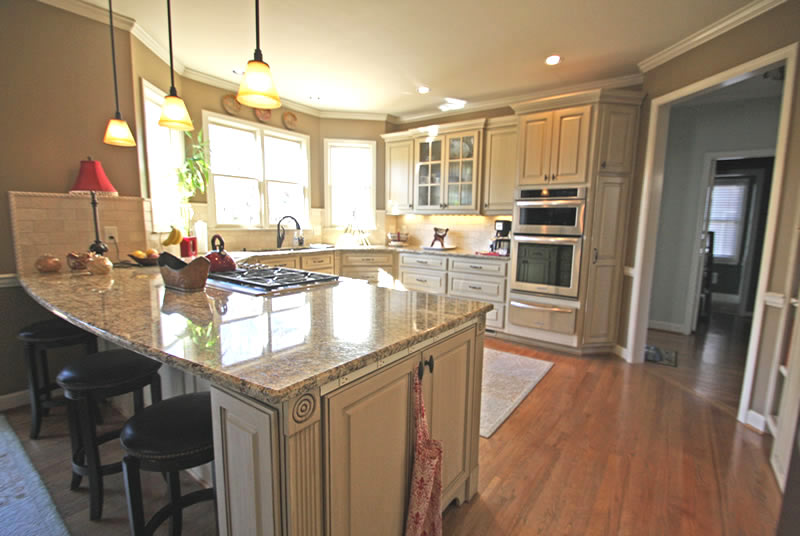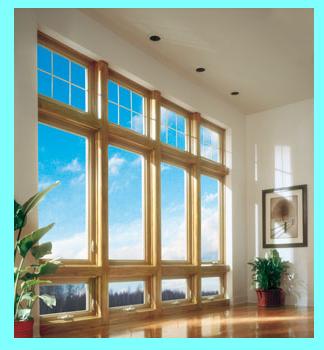In the age of smart homes and green technology, the quest for sustainability and convenience has led to groundbreaking innovations. One such marvel is the development of smart windows, which are poised to redefine the future of home automation and energy efficiency. But what exactly are these windows, and how do they contribute to a sustainable future?
Smart windows, often referred to as switchable or smart glass, are a testament to the fusion of technology and design. At their core, these home windows have the ability to change their light transmission properties based on various stimuli, be it electrical, thermal, or light itself. This dynamic adaptability offers homeowners the luxury of controlling the amount of light and heat that enters their homes, all at the touch of a button or even automatically.
The science behind smart windows is both fascinating and diverse. Electrochromic glass, for instance, uses a burst of electricity to shift from clear to opaque, allowing homeowners to adjust the transparency of their windows as needed. On the other hand, thermochromic glass responds to heat, automatically tinting when exposed to higher temperatures, making it an ideal solution for regions with intense sunlight.
But the appeal of smart windows goes beyond their technological prowess. From an energy efficiency standpoint, they are game-changers. Traditional windows, regardless of how well they’re insulated, have always been a weak point when it comes to energy conservation. Heat often escapes through them in the winter and penetrates homes during the summer. Smart windows, with their adaptive properties, can significantly reduce this energy loss. By controlling the amount of sunlight that enters a home, they can help maintain optimal indoor temperatures, reducing the reliance on heating and cooling systems. This not only leads to substantial energy savings but also contributes to a reduced carbon footprint.
The integration of smart windows into the broader ecosystem of home automation is where the true potential lies. Imagine a home where the windows automatically tint during the hottest parts of the day, work in tandem with the thermostat to maintain desired temperatures, and gradually become transparent as the sun sets, all without any human intervention. This seamless synergy between smart windows and other connected devices in a home represents the pinnacle of modern living—where convenience meets sustainability.
Understanding Smart Windows
At the core of smart windows is the concept of smart glass or switchable glass. This innovative technology allows the glass to change its light transmission properties based on external or internal stimuli. The result? Windows that can self-adjust, providing optimal light, enhancing privacy, and improving energy efficiency.
The marvel of smart windows lies in their ability to transform from transparent to translucent or even opaque, all within moments. This dynamic shift is achieved through the infusion of cutting-edge technology into the very layers of the glass. Depending on the type of smart glass, the change in opacity can be triggered by electricity, temperature, or light. This means that on a bright, sunny day, your windows could automatically darken to reduce glare and heat, and on a cold, cloudy day, they could become transparent to let in maximum light and warmth.
But what’s truly revolutionary about smart windows is the way they integrate with the environment around them. Gone are the days when windows were static barriers between the indoors and the outdoors. With smart technology, windows become interactive interfaces, responding in real-time to changes in the environment. For instance, as the sun moves across the sky, smart windows can adjust their tint levels to ensure consistent light and temperature inside the home. This not only enhances comfort but also reduces the need for artificial lighting and temperature control, leading to significant energy savings.
Beyond the immediate benefits of light and temperature control, smart windows also play a pivotal role in privacy. In spaces where both light and privacy are essential, like bathrooms or ground-floor apartments, smart windows offer an elegant solution. At the touch of a button, they can switch from clear to frosted, eliminating the need for curtains or blinds.
Types of Smart Glass
Several technologies fall under the smart glass umbrella, each with its unique properties and applications, transforming the way we interact with our surroundings.
Electrochromic Glass: This is perhaps one of the most advanced forms of smart glass available today. Electrochromic glass works on the principle of electrochromism, where materials change color or opacity when an electrical voltage is applied. When activated, ions move between layers within the glass, causing it to tint. Once the desired shade is achieved, no more energy is required to maintain the tint level. This type of glass can transition from fully transparent to nearly opaque, offering varying levels of privacy and light control. Its ability to provide precise control over the amount of light and heat that enters a space makes it a popular choice for both residential and commercial applications.
Thermochromic Glass: Nature itself inspires thermochromic technology. Just as certain flowers bloom with the rising sun or some animals change color with temperature variations, thermochromic glass responds to heat. Its light transmission properties change based on ambient temperature. For instance, on a hot summer day, the glass might automatically darken to reduce the amount of heat entering a building, while on a cooler day, it remains transparent. This passive technology ensures optimal indoor temperatures without any manual intervention, making it ideal for regions with significant temperature fluctuations.
Self-tinting Windows: These windows are a marvel of modern engineering. They use photochromic technology, similar to some eyeglasses that darken in bright sunlight. The intensity of sunlight directly affects the tinting process. The brighter the sunlight, the darker the tint. This ensures that interiors remain comfortably lit without the harsh glare of direct sunlight. Moreover, as the day transitions to night, these windows gradually return to their clear state, allowing occupants to enjoy nighttime views without any hindrance.
Energy-efficient Windows: While not a type of smart glass per se, it’s essential to mention energy-efficient windows in this context. These windows, often double or triple glazed, are designed to prevent heat from escaping in the winter and entering in the summer. When combined with smart glass technologies, they offer the ultimate solution in terms of comfort, energy savings, and sustainability.
The beauty of smart glass lies not just in its technological prowess but also in its adaptability. Whether it’s a skyscraper in a bustling city, a cozy home in the suburbs, or a state-of-the-art facility in a remote location, smart glass can be tailored to meet specific needs. From enhancing privacy to optimizing energy consumption, its applications are vast and varied.
As research continues and technology evolves, we can expect even more advanced and diverse types of smart glass to emerge. Innovations like glass that can generate electricity or windows that can display information are already on the horizon. The future of smart glass promises to be as dynamic and transformative as the technology itself.
Benefits of Smart Windows
The integration of smart windows into modern architectural designs and home automation systems is not just a nod to technological advancement; it’s a reflection of the evolving needs and preferences of homeowners and businesses alike. These windows, with their adaptive and interactive features, offer a plethora of benefits that cater to both functional and environmental considerations.
Energy Efficiency: One of the most significant advantages of smart windows is their contribution to energy conservation. Traditional windows, even when well-insulated, can be a primary source of energy loss. In contrast, smart windows, with their ability to adjust light and heat transmission, can drastically reduce the need for artificial lighting and temperature control. By optimizing the amount of sunlight that enters a space, they can help maintain comfortable indoor temperatures, reducing the reliance on heating in the winter and cooling in the summer. This not only leads to substantial energy savings but also reduces the strain on power grids, especially during peak demand periods.
Enhanced Comfort and Convenience: Beyond energy savings, smart windows elevate the comfort level of indoor spaces. By automatically or manually adjusting their opacity, they can control glare, reduce UV exposure, and even mitigate the effects of external noise. Imagine sitting in your living room, enjoying a movie without the interference of glaring sunlight, or working in an office without the distraction of street noise. Moreover, with integration into smart home systems, controlling these windows becomes seamless. Whether it’s through voice commands, mobile apps, or preset schedules, achieving the desired ambiance is just a click or command away.
Improved Privacy: In urban settings, where buildings are often closely spaced, privacy can be a concern. Smart windows offer an elegant solution. With the ability to switch from transparent to frosted or opaque in mere seconds, they provide instant privacy without the need for curtains or blinds. This feature is especially beneficial in spaces like bathrooms, ground-floor apartments, or conference rooms, where both light and privacy are essential.
Aesthetic Appeal: Smart windows bring a touch of modernity and sleekness to architectural designs. Their minimalist appearance, devoid of bulky curtains or blinds, offers clean lines and unobstructed views. This can enhance the aesthetic value of both residential and commercial spaces, making them look more spacious and contemporary.
Sustainability and Environmental Impact: In an era where sustainability is paramount, smart windows align perfectly with green building principles. Their energy-saving capabilities directly translate to reduced carbon emissions. Furthermore, by lessening the dependence on artificial lighting and temperature control systems, these energy efficient windows promote the use of renewable energy sources. This commitment to energy efficiency and sustainability can also contribute to green building certifications, increasing the value and appeal of properties.
Long-term Cost Savings: While the initial investment in smart windows might be higher than traditional windows, the long-term benefits justify the cost. Reduced energy bills, combined with potential tax incentives and increased property value, mean that smart windows can offer a return on investment in the long run.
In essence, the benefits of smart windows extend beyond mere functionality. They represent a harmonious blend of technology, design, and environmental responsibility. As the world moves towards more sustainable living practices, smart windows stand out as a beacon of innovation, promising a future where comfort, convenience, and conservation coexist.





